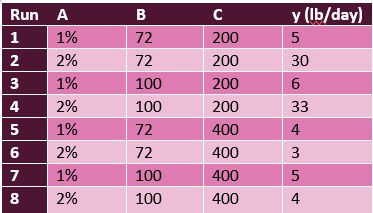HYPOTHESIS TESTING
- sjhyun20
- Feb 3, 2022
- 3 min read
For this week’s blog, we are going to discuss about Hypothesis testing 😊
Hypothesis testing are the formal procedures used by experimenters or researchers to accept or reject statistical hypothesis.
The ideal way to determine if a statistical hypothesis is true is by examining the entire population. However, since that is impossible, researchers usually examine only a random sample from the population. If the sample data is not consistent with the statistical hypothesis, the hypothesis is rejected.
The steps to carry out Hypothesis Testing are:
1. State the statistical hypothesis
→ Ho is x = µ (null hypothesis)
H1 is x ≠ µ (alternate hypothesis)
2. Formulate an analysis plan
→ t-test (n < 30)
z-test (n > 30)
→ Determination if test is one-tailed or two-tailed
3. Calculate the test statistics
→ Use the appropriate formula to calculate the statistics (t)
4. Make a decision based on the results
→ Reject or accept the null hypothesis
→ Conclusion
Now, I am going to be carrying out Hypothesis Testing for the Catapult Experiment that my group completed to testing my understanding for Hypothesis Testing.
HYPOTHESIS TESTING TASK FOR INDIVIDUAL BLOG
For this assignment, you will use the DOE experimental data that your practical team have collected both for FULL Factorial and FRACTIONAL Factorial.
DOE PRACTICAL TEAM MEMBERS (fill this according to your DOE practical):
1. Karthikeyan (Iron Man)
2. Vignesh (Thor)
3. Iman (Captain America)
4. Seri (Black Widow)
5. Jihyun aka me! (Hulk)
Data collected for FULL factorial design using CATAPULT A (fill this according to your DOE practical result) :

Data collected for FRACTIONAL factorial design using CATAPULT B (fill this according to your DOE practical result) :

Iron Man will use Run #2 from FRACTIONAL factorial and Run#2 from FULL factorial.
Thor will use Run #3 from FRACTIONAL factorial and Run#3 from FULL factorial.
Captain America will use Run #5 from FRACTIONAL factorial and Run#5 from FULL factorial.
Black Widow will use Run #8 from FRACTIONAL factorial and Run#8 from FULL factorial.
Hulk will use Run #3 from FRACTIONAL factorial and Run#3 from FULL factorial.
Thus, I will be using Run 3 to conduct my Hypothesis Testing. Run 3 has a combination of Low Arm Length, High Start Angle, Low Stop Angle.
The following Hypothesis Testing steps were completed on a templated provided for us.




REFLECTION:
Hypothesis Testing was the first CPDD lesson that involved calculations without using a software or conducting experiments or wrecking our brains to think of new ideas. This made enjoy Hypothesis Testing A LOT as it was easy to understand and carry out.
Hypothesis Testing opened my eye to product development. Hypothesis Testing determines the reliability of a statistical hypothesis which sets the foreground for improvements to be made for a certain product. Initially, I thought a product was deemed good if it had several similar consistent results, unaware that there was whole formula to calculate from the results obtained and compare with its own acceptable and reject range based on statistics. This made me realise how making a product work is just a tip of the iceberg to product development. Even if a product works, if it is unable to deliver its optimal desired function or work harmoniously with its different parameter, it is unsuitable for use.
Going forward, I feel that Hypothesis Testing will be commonly used during my internship and Capstone Project. Conducting hundreds of runs of tests for the product in question and using that data to determine if the statistical hypothesis is true or false, making improvements and deciding on the most promising factors to come up with the most satisfactory product.






Comments